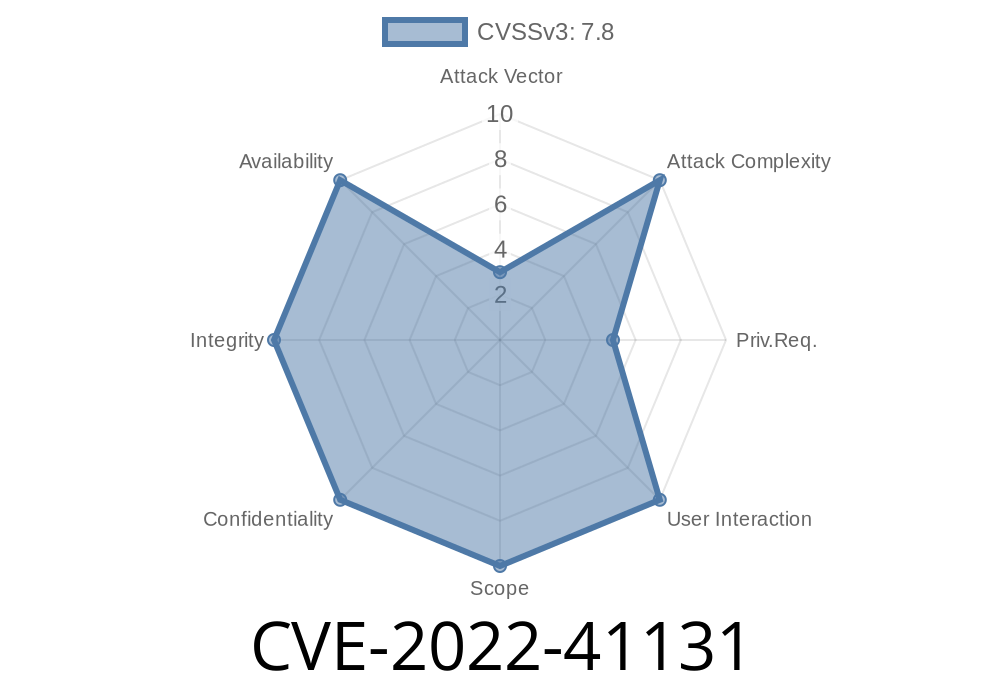Summary: A recent CVE-2022-41131 vulnerability exposes a security risk within Apache Airflow. An attacker can execute arbitrary commands in the task execution context through improper neutralization of special elements used in an OS command. This article discusses the details of this vulnerability, highlights the affected versions, and recommends the required mitigation steps, including a code snippet for reference and links to the original references.
CVE-2022-41131: Improper Neutralization of Special Elements in OS Command Vulnerability in Apache Airflow Hive Provider
A new vulnerability, identified as CVE-2022-41131, has been disclosed in the Apache Airflow Hive Provider. The vulnerability involves an OS Command Injection that results from improper neutralization of special elements used in an OS command. In other words, an attacker can leverage this vulnerability to execute arbitrary commands in the task execution context, even without write access to the DAG files (source).
Hive Provider versions prior to 4.1.
- Apache Airflow versions prior to 2.3., in case HIve Provider is installed. (Note: Hive Provider 4.1. can only be installed for Airflow 2.3.+)
To mitigate this vulnerability, you need to upgrade the Hive Provider to version 4.1. and, if necessary, Apache Airflow to version 2.3. or higher.
The following code snippet demonstrates a vulnerable OS Command Injection within the Hive Provider
from airflow.providers.apache.hive.operators.hive import HiveOperator
hive_task = HiveOperator(
task_id="vulnerable_hive_task",
hql="SELECT * FROM my_table WHERE some_field='{cmd_injection_payload}';",
hive_cli_conn_id="my_hive_connection"
)
Upgrade Apache Airflow to version 2.3. or higher if you're using a lower version
pip install -U apache-airflow==2.3.
2. Manually install the Hive Provider version 4.1. on top of Airflow 2.3.+ with potentially lower versions of the Hive Provider:
pip install -U apache-airflow-providers-apache-hive==4.1.
Verify that the updated versions are installed
pip freeze | grep -E "apache-airflow==|apache-airflow-providers-apache-hive"
You should see the output similar to the following
apache-airflow==2.3.
apache-airflow-providers-apache-hive==4.1.
4. Review and update your DAG code to ensure it follows best practices and does not contain any vulnerable OS Command Injection patterns.
Original References
- CVE-2022-41131 - https://cve.mitre.org/cgi-bin/cvename.cgi?name=CVE-2022-41131
- Apache Airflow - https://airflow.apache.org/
- Apache Airflow Provider for Apache Hive - https://airflow.apache.org/docs/apache-airflow-providers-apache-hive/stable/index.html
In conclusion, it is crucial to promptly address security vulnerabilities like CVE-2022-41131 in your systems, especially when they involve widely used open-source tools like Apache Airflow. Patching these issues, implementing best practices, and staying up-to-date with the latest software developments are essential steps to enhancing the overall security posture of your environment.
Timeline
Published on: 11/22/2022 10:15:00 UTC
Last modified on: 11/28/2022 17:50:00 UTC
